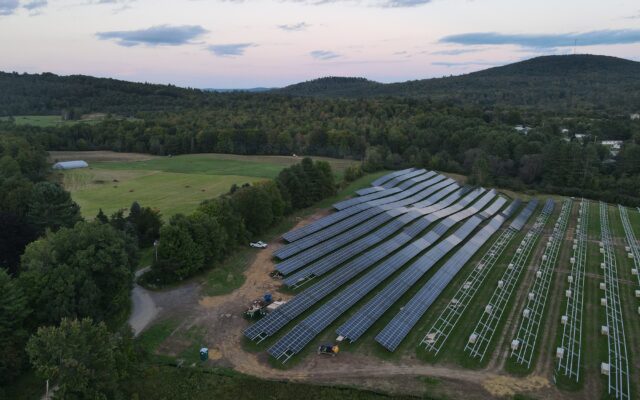
New rules for solar development make companies pay to put panels on certain farmland
By Elizabeth Walztoni, Bangor Daily News Staff
Maine has adjusted its potential rules for the development of solar arrays on valuable farmland, and is now taking public comments on a second draft.
Solar arrays based on the ground have been spreading in Maine since 2019, when Gov. Janet Mills signed a law that made it easier for the projects to be approved. Local ordinances can restrict them, but they haven’t had many limits on the state level.
A 2023 law sought to change that by adding a focus on conservation to solar sites, so the state Department of Agriculture, Conservation and Forestry drafted rules that would make developers pay for putting panels on 20 or more acres of valuable agricultural land. An initial version opened for comment in August.
The new draft removes the categories of forested land and land with local value it had suggested be protected, plus a few steps that would have made more work for developers. It also added blueberry barrens as a category that could become high value land.
It’s the latest information we have about how Maine will try to manage preserving its remaining farmland while increasing solar energy use as part of the state’s climate change response plan. Those two goals can be at odds with each other, and at times divisive. The comment period, which opened last week, is a chance to weigh in before the rules take effect.
Both versions set up a permitting process and require developers to submit plans to the state showing that they tried to reduce their impact on valuable farmland when designing their projects.
The state has said the rules likely won’t affect most projects.
The more valuable the farmland is, the more developers would have to pay in “compensation fees” to build large projects. Those fees would be calculated and collected by the Department of Environmental Protection, which would put them into an account for the department of agriculture to use for “farmland conservation or solar mitigation projects.”
A survey by a state soil scientist would determine the land’s value for agriculture, and the fee calculation includes other factors such as the land’s history of farming and the opportunity for agricultural uses under the panels.
If a site was “dual use,” with a farmer grazing sheep or growing blueberries under the panels, there would be no fees for early applicants. The same goes for panels on high-value land that’s contaminated with PFAS, or “forever chemicals.”
Based on previous public comments, forested land is no longer considered high agricultural value, even if the forest’s soil would be good for farming, Craig Lapine, director of the Bureau of Agriculture, Food and Rural Resources, said in a public memo.
The new rules also drop the category of “locally valuable farmland” because commenters thought it meant large amounts of open land could be redefined as high agricultural value, according to Lapine.
That category didn’t have a formal definition, but the department has described it as property that’s important to a local community or economy even if it doesn’t have good farm soil.
The latest draft also makes it easier to get permits for projects that are between five and 20 acres or on land contaminated with PFAS. Those can be approved faster if they meet the requirements, a process called permitting by rule.
Under the first draft rules, developers of projects this size had to explain how they would meet the state’s standards for best management practices. In the updated version, they only have to say that they will, according to Lapine’s memo.
Solar advocates say farmers can make money to stay afloat in difficult times by leasing some of their land to developers while farming the rest. In response, the department has lowered the fees for projects that help an existing farm economically.
The fee structure has been changed to put less value on “conversion pressure,” or the likelihood that a farm could be sold or developed. In the new rules, that factor is only considered for projects on the best farmland in counties with high development pressure.
The draft also outlines an appeals process and enforcement actions for the rules.
Public comment is open until Thursday, Dec. 26, and can be sent by email or physical mail. The full draft and information is available on the department website.